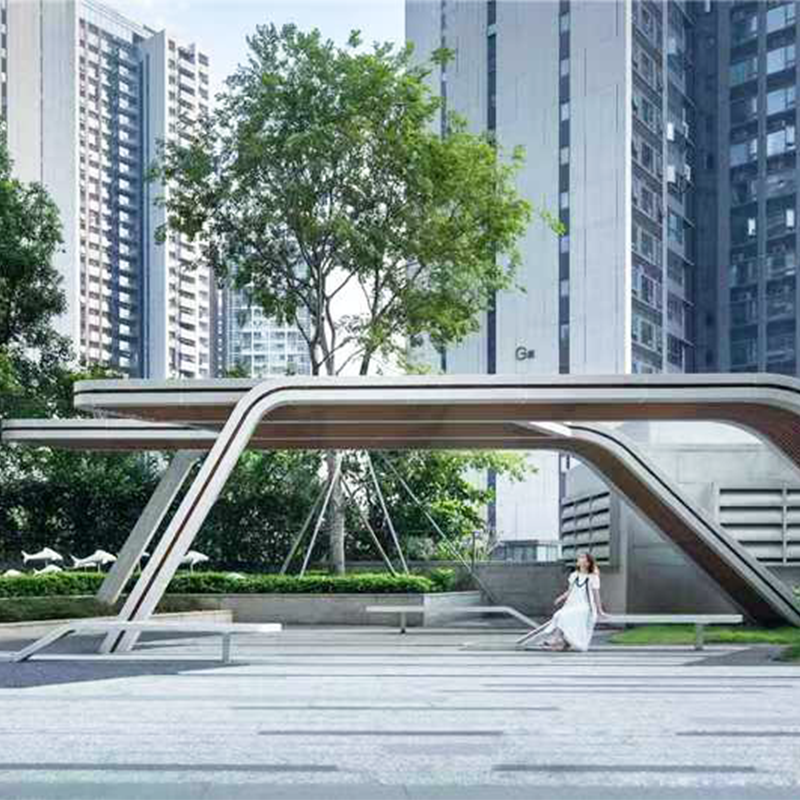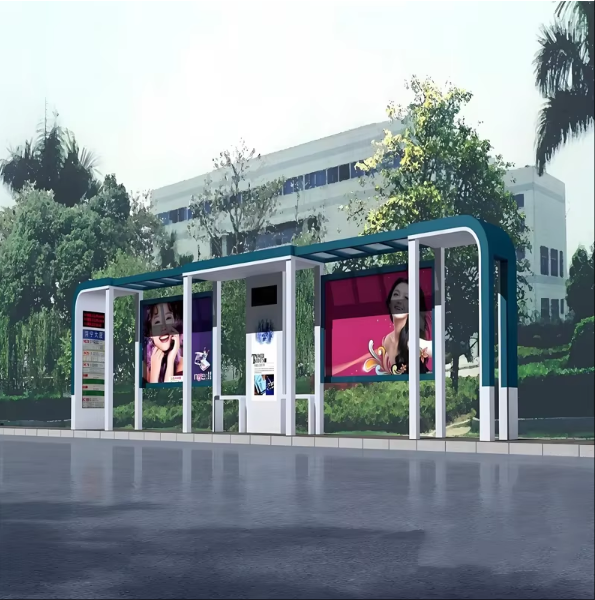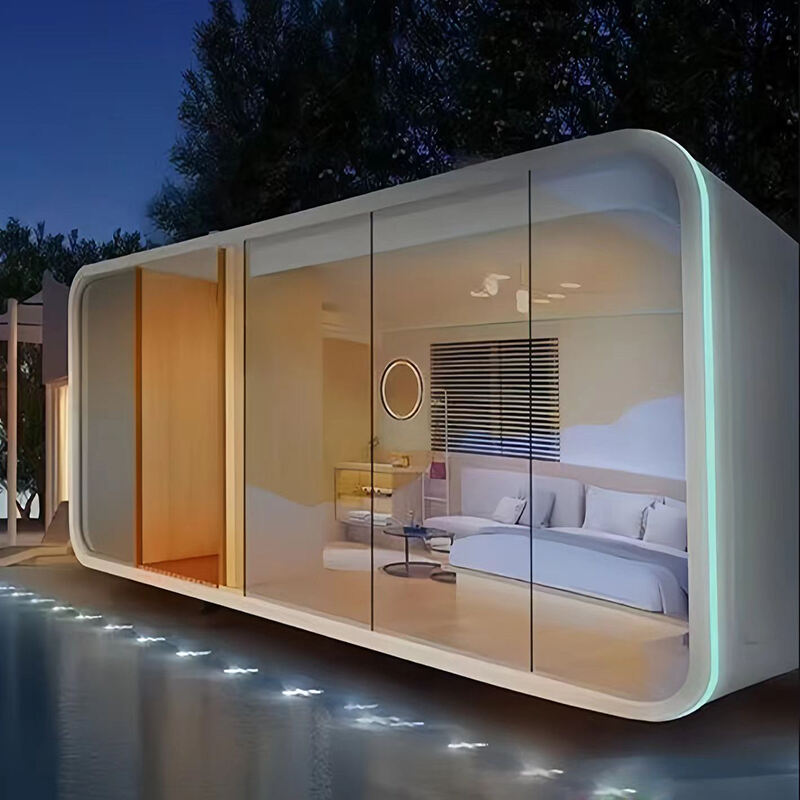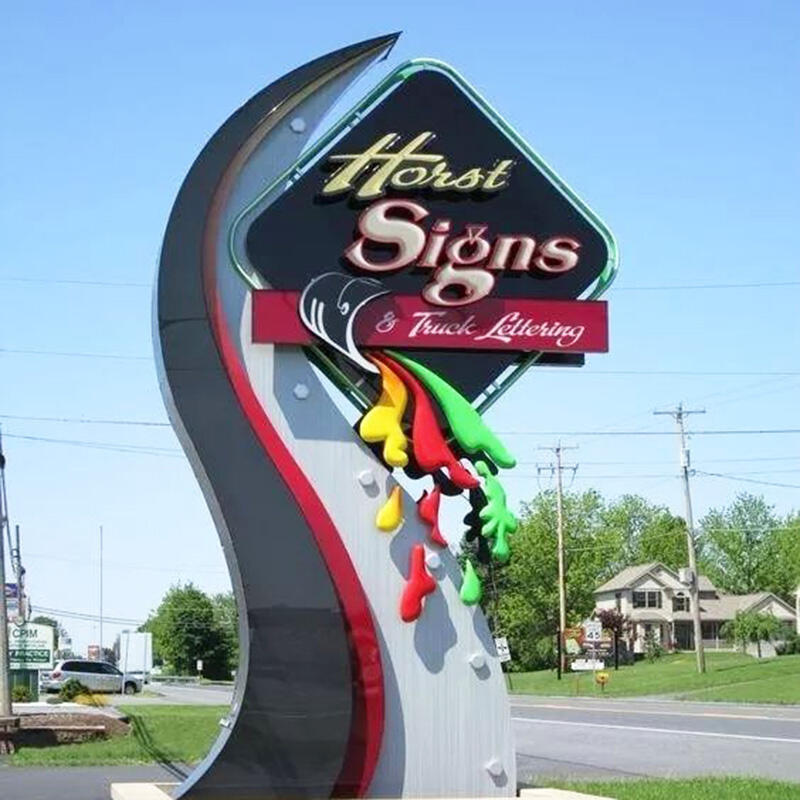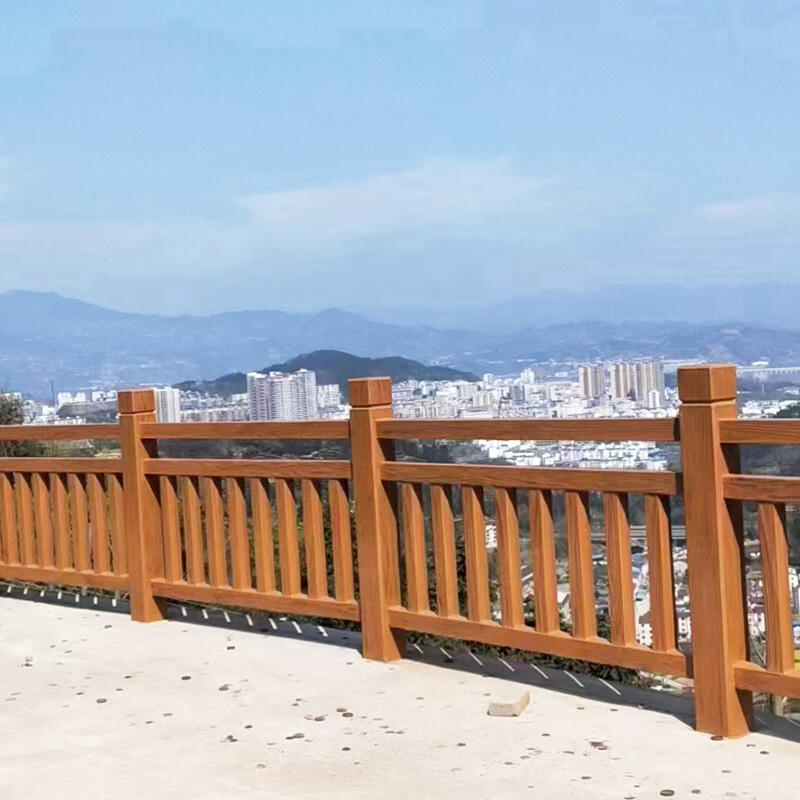Reklamní značky jsou nezbytnými nástroji vizuální komunikace, které propagují značky, produkty nebo služby určené cílovému publiku. Tyto značky slouží jako němý prodejce, přitahují pozornost a ovlivňují rozhodnutí spotřebitelů. Venkovní reklama má zejména klíčovou úlohu v zvyšování povědomí spotřebitelů. Je to dynamické médium, které umožňuje přímé interakce s rozsáhlým publikem a významně podporuje pamatování na značku a její poznávání. Jak se podniky stále více zaměřují na strategické umístění těchto značek, důležitost této formy reklamy dále roste.
Prozkoumávání různých typů reklamních cedulí odhaluje rozmanitost v marketingových přístupech a rozpočtech, které tyto cedule obsluhují. Běžné typy zahrnují billboardy, ukazatele, neonové cedule, prapory a digitální obrazovky. Billboardy a ukazatele jsou tradiční, ale stále velmi účinné, často strategicky umístěné na dálnicích a rušných ulicích pro maximální viditelnost. Neonové cedule dodávají unikátní, upoutávající záření, ideální pro noční reklamu. Prapory nabízejí flexibilitu v návrhu a umístění, zatímco digitální obrazovky umožňují dynamický obsah, který lze přizpůsobit aktuálním událostem. Empirické důkazy naznačují, že tato venkovní reklamní média mají významný potenciál zapojení, nabízejíce jak širokéměrodnou viditelnost, tak i lokální cílení.
Plánování instalace vaší reklamní cedule
Nastavení jasných cílů pro vaši ceduli
Stanovení jasných cílů pro vaše reklamní značky je klíčové pro jejich úspěch. Tyto cíle mohou zahrnovat zvýšení pohybu návštěvníků, posílení známosti značky nebo stimulaci prodeje a musí být měřitelné. Metody jako sledování prodejních ukazatelů, zpětná vazba od zákazníků a analýza provozu na webu mohou být použity k monitorování efektivity značek. Sesouvání těchto cílů s vašimi celkovými marketingovými strategiemi zvyšuje soudržnost a může vést ke významným odměnám. Případové studie často zdůrazňují, jak firmy, které úspěšně integrují své reklamní cíle se značkováním, dosahují vyšší viditelnosti značky a zapojení zákazníků.
Volba správného umístění pro maximální viditelnost
Výběr správného umístění pro vaše reklamní cedule je nezbytný pro maximalizaci viditelnosti a účinnosti. Faktory jako objem provozu, konkurence v okolí a návyky váš cílové demografie by měly být analyzovány. Statistiky ukazují, že lokality s vysokou viditelností, jako jsou rušné křižovatky nebo středy nakupovacích zón, významně zvyšují angažovanost. Navíc je třeba věnovat pozornost technikám viditelnosti, včetně výšky cedule, její vzdálenosti od silnice a optimálním zorným úhlech, aby bylo zajištěno, že se cedule dostane efektivně ke svému zamýšlenému publiku. Tyto strategické metody umístění jsou klíčové pro to, aby váš billboard nebo sloup sloužil účinně svému účelu.
Chápání místních předpisů a povolení
Navigace v regulačním prostředí pro reklamní značky vyžaduje důkladné porozumění místním zónovým předpisům, požadavkům na povolení a omezením velikosti. Efektivní řízení procesů místní správy je nezbytné k preventivě právních problémů souvisejících s neposlušností. Reálné příklady firem čelících výzevám kvůli těmto regulačním nedbalostem ukazují důležitost komplexního výzkumu a přípravy. Díky porozumění místním předpisům týkajícím se reklamních značek a získání potřebných povolení mohou firmy zajistit dodržování pravidel a zabránit přerušení ve svých marketingových strategiích. Dodržování předpisů nejenom eliminuje pokuty, ale také posiluje profesionální důvěryhodnost a veřejný obraz.
Návrh efektivních reklamních značek
Klíčové prvky úspěšného návrhu značky
Vytvoření účinného nápisu začíná porozuměním základním prvkům designu, jako jsou barva, písmo, obraz a rozvržení. Barvová teorie hraje významnou roli, protože různé odstíny mohou vyvolávat různé emoce a reakce u spotřebitelů. Například červená může naznačovat naléhavost, zatímco modrá často přenáší důvěru. Doplňkové barvy by měly být vybrány na základě firemní identitky, aby se zajistila konzistence a atraktivita. Studie v časopise Journal of Business Research zdůrazňuje, že barva může zvýšit poznatelnost značky až o 80 %. Dobře navržené rozvržení zajistí, že je zpráva jasná a přitažlivá. Úspěšné kampaně, jako jsou billboardy Nike, využívají silných a jasných designů k efektivnímu přenosu svých zpráv prostřednictvím vizuálního vyprávění, což dokládá důležitost efektivních reklamních nápisů.
Integrování firemní identity do vašeho nápisu
Integrování prvků firemní identity, jako jsou loga a slogan, do návrhů informačních tabulí je klíčové pro posílení poznatelnosti značky. Konzistence napříč různými médii pro podporu značky nejen posiluje poznatelnost, ale také buduje loajalitu k značce. Velké značky, jako je Coca-Cola, systematicky začleňují své ikonické logo a barvy do všech reklamních tabulí, čímž zajistí jednotnost značky. Tento soudržný přístup pomáhá posílit jejich sdělení, činí ho pamětihodným a okamžitě poznatelným. Udržování shody napříč různými typy informačních tabulí, od billboardů po menší ukazatele, je zásadní pro jednotný obraz značky.
Zajištění čitelnosti a viditelnosti z dálky
Čitelnost je klíčem k zajištění, aby byl váš nápis snadno čitelný pro diváky, dokonce i z dálky. Kritické faktory zahrnují volbu vhodné velikosti písma, udržování vysoké kontrastnosti mezi textem a pozadím a vyhýbání se přeplnění, když udržíte text stručný. Podle odborníků na návrh nápisů by měl být text čitelný z vzdálenosti alespoň deseti stop pro každý palec výšky písmen, což zajišťuje efektivní čitelnost nápisu. Vlastnosti viditelnosti, jako je dostatečné osvětlení, jsou rovněž životně důležité, zejména pro viditelnost v noci. Data ukazují, že dobře osvětlené nápisy mají větší šanci upoutat pozornost spotřebitelů po zapadnutí slunce, což zvyšuje angažovanost díky lepší čitelnosti. Proto je zaměření na čitelnost a viditelnost klíčové pro vytvoření úspěšných reklamních nápisů, které dozní k jejich cílovým skupinám.
Instalační proces: Krokový průvodce
Předinstalační průzkum lokality
Provádění předinstalačního průzkumu místa je nezbytné pro posouzení vhodnosti umístění pro montáž značek. Tento proces zahrnuje kontrolu fyzických podmínek, jako je volné prostoro, integrity nosnící plochy a vystavenost environmentálním faktorům. Důkladný průzkum místa pomáhá identifikovat potenciální problémy a upravit řešení podle nich. Branchové zprávy naznačují, že běžné problémy, jako jsou strukturální slabiny nebo nedostatečné prostoro, mohou významně ovlivnit úspěch instalace. Proto je pečlivá analýza místa klíčová k vyhnutí se nákladným chybám a zajistění hladké instalace.
Příprava nástrojů a vybavení
Před začátkem instalace značky je nezbytné připravit potřebné nástroje a vybavení. Zásadní položky zahrnují vrtáky na pevné umístění značky, stavební lešení pro přístup do výškových oblastí a ochranné vybavení, jako jsou helmy a rukavice pro ochranu montérů. Mít správné vybavení připravené nejen zvyšuje efektivitu, ale také zajistí kvalitní práci. Zde je stručný seznam pro účinnou přípravu:
- Uspořádejte všechny nástroje a vybavení předem.
- Proveďte bezpečnostní instruktáž pro tým instalátorů.
- Zkontrolujte nástroje, aby bylo zajištěno, že jsou v pořádku.
Provádění těchto kroků maximalizuje bezpečnost a přesnost během procesu instalace.
Pevnění značky: Zeďově montované vs. Podlahově montované
Porozumění rozdílům při zajišťování zeďově montovaných a podlahově montovaných nápisů je klíčové pro úspěšnou instalaci. Zeďově montované nápisy vyžadují pozornost k nosně schopnosti stěny a zajistění viditelnosti nápisu pro cílovou obec. Podlahově montované nápisy na druhé straně zahrnují stabilizaci základu a zvážení viditelnosti jak pro pěší, tak pro vozidla. Studie případů ukazují, že když jsou techniky dobře provedeny, mohou významně zvýšit dosah u publika. Pozorovací data naznačují, že strategicky umístěné nápisy, ať už zeďově nebo podlahově montované, zvyšují viditelnost značky a zapojení.
Zpracování elektrických součástí pro osvětlené nápisy
Práce s elektrickými součástmi během montáže osvětlených cedulí vyžaduje přísná bezpečnostní opatření. Je nezbytné používat kvalifikované elektromontéry pro správu aspektů jako žehnání a bezpečné připojování LED modulů. Systémový přístup začíná získáním vysokokvalitních elektrických materiálů a dodržováním průmyslových standardů pro instalaci cedulí. Proces zahrnuje kroky, jako je zajištění správných spojů a důkladné testování funkčnosti za účelem zajištění bezpečnosti a spolehlivosti. Dodržování předepsaných bezpečnostních opatření minimalizuje rizika a zajišťuje délku života a efektivitu osvětlených reklamních cedulí.
Údržba a trvanlivost reklamních cedulí
Pravidelné čištění a kontrola
Údržba reklamních štítů zahrnuje pravidelné čištění a inspekce, aby se zajistila optimální viditelnost a konstrukční integrity. Konsistentní čištění by mělo brát v úvahu environmentální faktory, jako je znečištění a vystavenost počasí. Například štít v oblasti s vysokým znečištěním ve městském prostředí vyžaduje častější čištění než ten v venkovské oblasti. Podle studie publikované v časopise Journal of Environmental Design může pravidelná údržba prodloužit životnost štítu o až 25 % a významně zlepšit jeho viditelnost. Tyto výhody ospravedlňují přidělení specifického rozpočtu na průběžnou údržbu štítů, aby se zabránilo předčasnému opotřebení a zajistilo spojitou účinnost v reklamě.
Řešení poškození počasím a opotřebení
Poškození počasím je běžným problémem u nápisů, kdy větrné, deštivé a sluneční podmínky způsobují opotřebování. Různé typy poškození vyžadují různé strategie oprav. Například vodní poškození může vyžadovat použití vodoodolných materiálů, zatímco poškození sluncem může vyžadovat nátěry chránící před UV zářením. Studie mezinárodního časopisu pro venkovní reklamu zdůrazňuje, že nápisy vyrobené z kompozitních materiálů a s vlastními návrhy nátěrů lépe odolávají tvrdým environmentálním podmínkám. Tato studie ukazuje důležitost výběru trvanlivých materiálů a návrhů, které jsou vyvinuty tak, aby vydržely v konkrétních klimatických podmínkách, což zajistí, aby nápisy nejen přežily, ale i nadále účinně fungovaly jako reklamní nástroje.
Když opravit nebo nahradit váš nápis
Rozhodnutí, zda opravit nebo nahradit nápis, zahrnuje analýzu rozsahu poškození a zvážení nákladů a výhod. Nápisy, které jsou příliš poškozené, často vedou k vyšším nákladům na opravu než na jejich nahrazení. Navíc přechod od opravy k novému designu může přinést dlouhodobé výhody. Švihácký a dopadový design může významně posílit viditelnost značky a zájem zákazníků. Podniky mohou zkoumat případy, kdy společnosti úspěšně přešly od opravy ke změně, což vedlo ke zlepšeným reklamním výsledkům a návratu investic. Tento proces rozhodování by měl vždy vážit okamžité náklady proti dlouhodobým estetickým a funkčním výhodám, aby se zajistilo, že bude nápis stále cennou veřejnou zařízením propagujícím značku.



